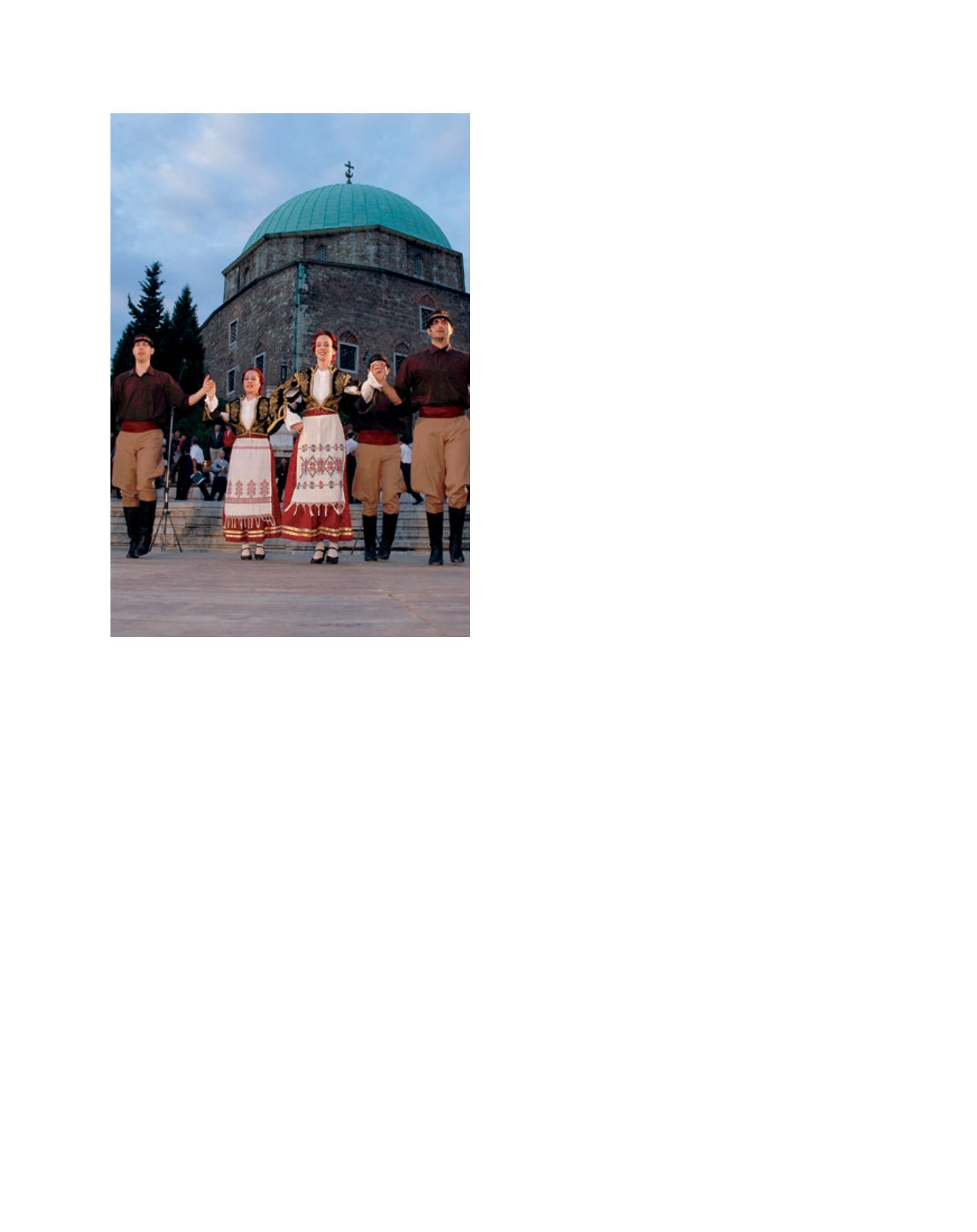

[
] 129
Hungarian-Chinese media forumwas organized in 2015 for the
sixty-fifth anniversary of the commencement of Hungarian-
Chinese diplomatic relations in the framework of the policy
of ‘Eastern Opening’ as well as enabling the publication of
books in Chinese by young novelists in the ‘Flash Fiction –
Flash Europa 28’ project implemented in cooperation with the
Hungarian Academy of Arts. István Fischer and the Budapest
Festival Music Band were well received and had great success
at crowded concert halls from Hong Kong to Taipei in 2014.
Also in 2014 the National Philharmonic Orchestra conducted
by Zoltán Kocsis gave a concert in one of the most prominent
Turkish concert halls, the
İş
Sanat Istanbul Hall. In 2013 the
programme of the Hungarian State Folk Ensemble, ‘Hungarian
Rhapsody – America’ was performed more than 70 times in
the USA and Canada. We hold our cultural ties with Israel
dearly, and this is proven by continuous guest performances
at the Budapest Operetta and Musical Theatre, the Honvéd
male choir and the Vígszínház, among other things.
The state, church and public-private collections, libraries,
museums and archives keep numerous documents and works
of art originating from distant cultures. The material remains
of South American Indians at the Museum of Ethnography, the
Chinese, Japanese, Korean, Indian, Vietnamese, Indonesian
and Islamic collection of the Hopp Ferenc Asian Museum of
Art, and the Tibetan, Turkish and Hebrew documents as well
as the Buddhist and Manichean manuscripts of the Eastern
Collection of the Hungarian Academy of Sciences are of
outstanding value to the cultural legacy of mankind.
Our large public collections are continuously working in
cooperation with the relevant institutions of distant countries.
In this context numerous significant exhibitions have been
realized in recent years (Museum of Ethnography: Egy hánya-
tott sorsú vidék: ‘Tóhoku kézm
ű
ves hagyománya’ – Japanese
folk art exhibition; ‘Vietnami porcelán’ – Vietnamese porce-
lain: a fragile remembering; Museum of Applied Arts: ‘Két
korszak határán’ – Persian arts in the Qajar era).
Besides our native language and literature, our national
culture is the most idiosyncratic, but within that Hungarian
music and folk art are the most easily received by the outside
world. In 2011 the Hungarian model of preserving folklore,
the Táncház method, was recognized by UNESCO as one of
the elements on the Register of Best Safeguarding Practices
for intangible cultural heritage. This model, serving as a refer-
ence to the preservation of the musical native language of
other peoples and to ‘reusing’ the rapidly declining reserve of
heritage of mankind, could not be devised without our world-
famous composers and scientists of the twentieth century,
Béla Bartók and Zoltán Kodály. Its creation and international
recognition contributed significantly to Budapest being given
the opportunity to host the World Music Expo (WOMEX).
The number one representative international event of folk
and world music, WOMEX is recognized by UNESCO as the
event for the preservation of cultural diversity. After Berlin,
Thessaloniki, Copenhagen, Brussels, Marseille and other
cities, Budapest will receive nearly 70 performers, music
bands and approximately 2,500 guests from around the globe.
An international event of similar renown is the Europa
Cantat festival, founded in 1961, which will take place in Pécs
this year. Europa Cantat puts the emphasis on gaining a better
understanding of each other’s cultures, international recon-
ciliation and the creation of common artistic productions.
Participants from approximately 40 countries will come to the
10-day-long international choir festival, which is organized
every three years and attracts some three thousand singers
who will work together in 50 musical workshops.
Nowadays, we may feel that the coexistence of cultures is
not always smooth and free of problems. We, Hungarians,
through our good practices developed over 1,000 years,
have proved that cultures can approach each other peace-
fully and affect one another productively. A special mindset
became an integral part of our culture, in that if we face a
challenge we try to find a solution relying on our traditions
and through our characteristic national approach. The seeds
of this special approach are the values that are important for
every person, which can also inspire people to joint action.
Work and everything that strengthens families are considered
our fundamental values, as well as efforts that provide families
with a home, preserve health and ensure that the order needed
to keep our values is maintained. We believe that the main
reason and goal of organizing people into a society is ethical
cooperation. This is a shared interest that may not be over-
written by any individual or particular group interest, and we
believe that an ethical cooperation based on mutual respect is
the foundation of a true rapprochement of cultures.
Over the years, waves of migration from all directions have contributed to
Hungary’s cultural diversity
Image: György Mánfai
A
gree
to
D
iffer

















